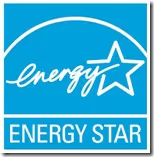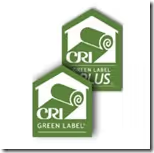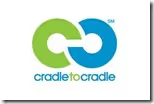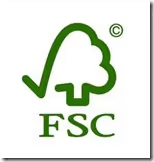

If you look around, you’ll see that companies left and right are all jumping on the “GREEN” bandwagon. Unfortunately, this has become a case of buyer beware, because too often they are just slapping on an ‘ECO-FRIENDLY’ label and that does NOT mean the product is actually environmentally responsible. To add to this confusion, there is often no consensus on what ‘GREEN’ means. This ‘Greenwashing’ has become a real problem for consumers looking for products and materials that are eco-friendly, sustainable and responsible.
The best defense against this type of deception is doing your homework, and looking for third-party certification seals. These show that a process of independent, reliable testing has been applied to the green building material or product in question. Even here there have been a number of imposters who try to make something look official when it isn’t. Learn to recognize the following green labels on products and services which are truly ‘Green’.


A joint program of the U.S. Environmental Protection Agency (EPA) and the U.S. Department of Energy which is dedicated to helping consumers compare and buy energy efficient products. Energy efficiency is an important first step in protecting the environment. The ENERGY STAR mark is the national symbol for energy efficiency. www.energystar.gov


You have probably never heard of the Carpet and Rug Institute, much less their green labels. Your designer probably has - if they are educated about green interior design. The labels refer to a carpet’s VOC (Volatile Organic Compounds) and other chemical emissions. The carpet, adhesives, cushions and even vacuums are tested by an independent laboratory using a methodology developed with the help of the EPA.
Unfortunately, indoor air quality is usually considered a small (and very under-emphasized) component of the environmentally sound life. Things like sustainable material sourcing, durability, and green company practices are too often seen as being more important to green living.


Launched in 2006, WaterSense is an EPA-sponsored partnership program designed to protect the future of our nation's water supply by promoting water efficiency and water-efficient products, programs, and practices.
WaterSense helps consumers identify water-efficient products and programs that meet WaterSense water efficiency and performance criteria. Products carrying the WaterSense label perform well, help save money, and encourage innovation in manufacturing. www.epa/gov/watersense


Green Seal is a non-profit independent agency that uses science-based environmental standards to certify green design products, materials and services. Green Seal works with the manufacturers, purchasing groups, industry sectors and the government to improve the ‘green-ness” of the production and supply chain. Only after undergoing a strict evaluation beginning with product creation and through recycling and disposal can a product be Green Seal Certified. www.greenseal.org


Cradle to Cradle certification evaluates products using a series of environmental and social criteria based on the principles of Cradle to Cradle design, developed by design and consulting firm McDonough and Braungart and detailed in their book by the same name. Their basic principle is that a product should be designed such that it can be used for something else at the end of its original life – nylon carpet into fuel, for example.
Cradle to Cradle is one of the most rigorous of the green labels for certification of eco-friendly design products. Their standards are publicly available, and they get at the heart of the problem of sustainability for a culture of consumption.


UL Environment is a subsidiary of Underwriters Laboratories which helps to support sustainable products by assisting businesses in standards development, education, as well as third-party assessment and certification. www.ulenvironment.com


The Forest Stewardship Council (FSC) certifies timber and wood products as well as forest management. An international organization founded in 1993, FSC provides certification other agencies which label products and companies as green certified according to the FSC’s standards. Standards for wood include: no genetic engineering, no harvesting in conservation areas, and no harvesting from conversion of natural forests.
The FSC green label has been criticized for conflicts of interest because anyone can join the General Assembly that sets the rules, even if they have allegiances elsewhere. The certification has also been accused of not making clear distinctions between natural forests and managed forests, which are seen as little more than plantations, and standards that change too frequently.



The Leadership in Energy and Environmental Design rating system developed by the U.S. Green Building Council is rigorous and thorough. It is still constantly being refined and updated, although professional builders often find faults with the system. To get LEED-certification on a home you must focus on things like energy efficiency, water conservation and indoor air quality. There are four levels to the LEED certification point system– Certified, Silver, Gold, and Platinum, with each one increasingly elite.
Although government buildings have been required to achieve LEED Silver or better and the USGBC works closely with the government on legislation, USGBC is a non-profit not affiliated with the federal government.
The LEED program legitimacy is well-established and the standards are strict. The program certainly encourages green design, especially the provision that awards credits for innovation. www.usgbc.org
These are just some of the many legitimate certified green label programs. I’ll be continuing this listing in future posts, so check back to keep learning what you need to look for and shield yourself against unscrupulous businesses.
Schedule your Discovery Call today to explore how we can bring your WELL Designed™ home to life.